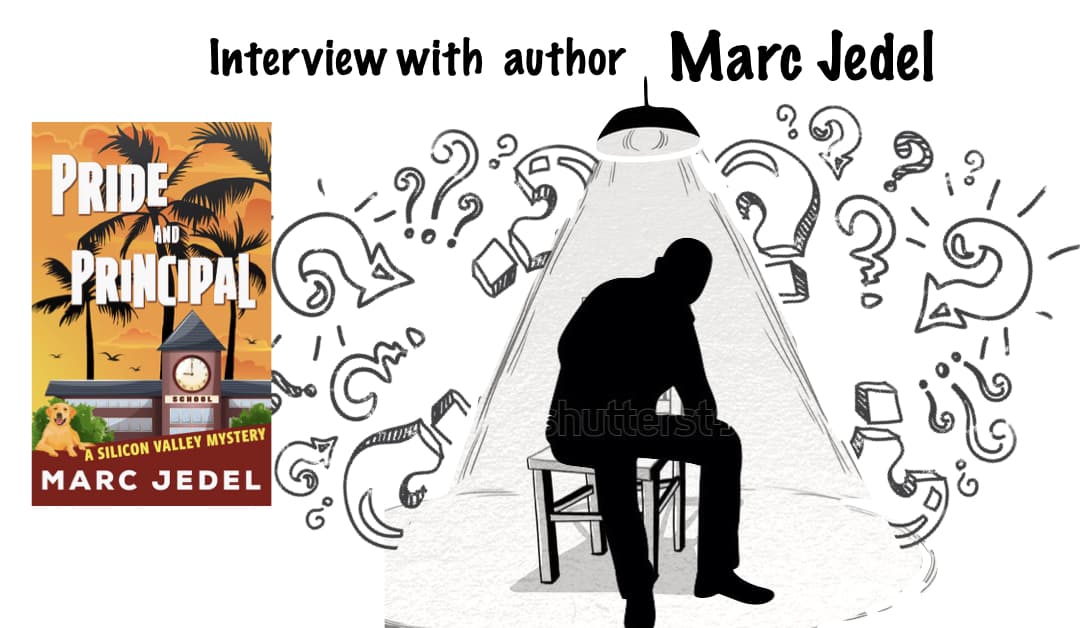I was supposed to write a guest post for a blog, but that felt too difficult for some reason. Instead I interviewed myself. I’m not quite clear how this makes anything easier, but it seemed to work so I went with it. Perhaps it’s because my writing often feels like I’m having a conversation inside my head with different imaginary characters.
Q: Is there anything unusual about your writing process?
A: It’s something I knew about myself for a long time, but only recently realized was strange. I’m really bad at naming characters. The main protagonists’ names come easily enough, but beyond that I am relatively hopeless. It’s just one of those weird things. While I’m writing I use KILLER, DEAD GUY, SUSPECT 1, and so on. Fortunately I’ve got a friend whom I call my “name whisperer.” It is a pretty cool-sounding nickname which he likes better than just getting called, “hey you.”
Once I send him the character descriptions, he magically responds with some really good name options for me. Sometimes his stories behind his suggestions can be even funnier than the scenes I’d planned to use them in, but he promises all the names are fictionalized.
When I finished the manuscript for Rivers and Creaks (the first in my new Redwoods Country Mystery series), it didn’t have names in it until right before I sent it to the copy editor. This turned out to be a bit of a joke on myself as I then had idea who these people were when I proofed the final version before publication.
Q: What was the most difficult part of writing?
A: Figuring out new, interesting, and plausible ways to kill someone is actually way more challenging that one might think. Especially when you’re trying to write it in such a way that an amateur detective can figure it out without getting any help from the police and I don’t want the readers to guess whodunnit. I feel like a success when readers tell me they couldn’t guess who or why until the reveal. Yet all this requires some very unusual internet searches. I’m just glad no law enforcement officer has knocked on my door to ask about my search history.
Q: Explain the unusual technique that you use in your stories.
A: I purposefully craft each novel to take place over less than a week’s time period. I’ve found this helps me keep the pace moving quickly in the novel. With only days to develop and solve an entire mystery, there’s no time to lose. No one sits around doing laundry. Or if they do, something important is discussed or happens that moves the story forward. This keeps the pressure on the protagonists to solve the crime and also avoid having their lives screwed up too much.
Q: How much real world experiences do you bring into your stories?
A: My wife and I are longtime Stanford women’s basketball fans. One day before a pre-season game started in November, we were sitting in our seats talking to a neighbor who has become a fan of my novels. I realized that Marty’s next book would likely take place in January to stay true to the series pace, which meant it would take place smack in the middle of basketball season. Quickly, I committed to having a key scene take place in the stadium at one of the games. Then I spent too much of the next few games looking at everything in the stadium except for the basketball. And that wound up being the final scene of the novel.


Hi Marc,
I have an idea for one of your books please on the country.
The large round hay bales weigh about 1100 pounds or more.
A person could be rolled up in there and not be found for quite some time.
You could have an argument between two characters. Depending on how you want it to go, an accidental fall that scares that person enough to roll up the dead victim into a bale. A lot of possibilities. Keep in mind that this has to take place in a pasture that was recently cut and raked, then ready to roll.
Thanks for the suggestion. Sounds like a gruesome way to die, especially if you have allergies.
Hi Marc, I’m currently reading ‘Pride and Principal’ on Kindle. Speaking of the character names, I think you used the wrong one on the suspect board. In the phrase ‘…and then the symbol for female next to Ariel.’ That’s the only mention of an ‘Ariel’ in the book, I think it was supposed to be ‘Leticia.’
Thanks for catching the mistake. I’ll fix it and republish the corrected version soon! Hope you’re enjoying the novel. Send me an email to let me know what you like the best.